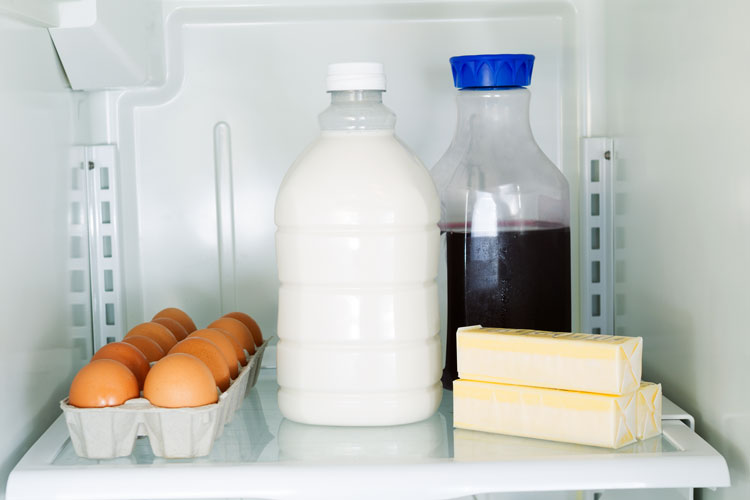
While the New England Patriots scored more points than the Los Angeles Rams in Super Bowl LIII, it might be a stretch to call them a winner. The game was dominated by defense — or, better to say, lack of offense. I was accustomed to exciting, high-scoring games this postseason, so this game was a let down.
But, in between the ho-hum game, there were the commercials. A few I thought were funny, others made me smile, and a few that I just “did not get” was probably a sign of my age and unawareness of who these new popular celebrities are.
Super Bowl Sunday is the second-largest food consumption day after Thanksgiving. That means 12 million slices of pizza, 1.3 billion wings, 51.7 million cases of beer, 11.2 million pounds of potato chips, and 14 billion burgers were consumed. And, each of those items took a farmer to bring to market. Unfortunately, there were negative social media posts about obesity and food inspectors in the ones I viewed. But the idea of Super Bowl eating is more about the people who you are sharing those delicious snacks with, and not the calories. Those negative posters missed the enjoyment friends and food can bring. (We will be back on our New Year’s resolution eating plans tomorrow, right?)
There were some upsides to the social media around the game, too. USDA was posting on Facebook about California and New England’s agricultural commodities, piggy-backing on the #SBLIII and the #LARams or #GOPats hashtags to try to engage football fans. The posts included a beautiful photo and about three lines of copy. Everything a positive post should have . . . except a link to learn more about grapes, floriculture, dairy, and the multitude of other agricultural products produced in California and all of the New England states. Next time.
The one commercial that irritated me, and I know enraged several people as they shared it on social media, was one for a previously not-well-known cellular service company. Their ad talked about chunky milk and had family members “enjoying” chugging that type of milk from cartons. Not that a mobile network would be thinking of the agricultural industry, it did not do the dairy industry or the average consumer any favors. We all know that we provide a wholesome product, and when properly cooled and cared for, chunky milk is never the result.
From what I have read online, few people liked the commercial. For the average milk drinker, milk that is not cold or fresh makes our stomachs woozy. It is on my list of least favorite commercials, and I am sure on others as well — both in agriculture and beyond. Dairy farmers across the country work hard to produce a quality product, and unfortunately our product was caught in marketing crossfire.
But, we can make this a teachable moment.
How do you avoid chunky milk? Keep it cold and refrigerated, and preferably not on the door. Products stored on the door are exposed to warmer temperatures as the door opens and closes multiple times a day. Keep milk at 40°F or below, preferably 38°F. Storing and serving milk at this temperature extends overall shelf life and maximizes flavor.
Here are a few more guidelines from the DairyGood and Dairy Council of California websites, on how to best care for your dairy products. For the consumer, it starts with grocery shopping. When buying milk, check the sell-by date, which is usually stamped at the top of the carton. Make sure the date hasn't already passed (most grocery stores ensure their stock is up-to-date) and then decide whether you will be able to finish the milk within a few days of the sell-by date. If the milk in your refrigerator is a few days past its sell-by date, drink it with confidence as long as it smells good.
In general, perishable foods like milk should not sit out of the refrigerator or cooler for longer than two hours. (Cut that time down to an hour in the summer if the temperature reaches 90°F.) So, if enjoying milk with your meal, be cognizant of how long milk is outside of the refrigerator. When shopping, make milk one of your final items to put in your shopping basket and refrigerate it promptly when you get home.
So, let’s respond with an #avoidchunkymilk and #ChillinWithMilk to show consumers how to correctly handle milk in order to showcase its fabulous flavor. In that way, we are positive in our message and using a little of the Super Bowl media frenzy to educate consumers.
Join us for our next webinar on February 11, 2019:
Geoff Dahl, University of Florida, presents “Heat stress affects dry cows and calves” on Monday, February 11, at noon (Central time). Sponsored by TechMix.
Heat stress during late gestation has significant negative effects on the productivity of the cow in the next lactation. Emerging evidence suggests that the developing fetus is also negatively impacted, with lower milk yields in the first lactation and beyond. Sign up here.

The author is the online media manager and is responsible for the website, webinars, and social media. A graduate of Modesto Junior College and Fresno State, she was raised on a California dairy and frequently blogs on youth programs and consumer issues.








